 SAY IT IN
SAY IT IN
ITALIAN BY OLGA RAGUSA Professor of Italian Columbia University DOVER PUBLICATIONS, INC.
MINEOLA, NEW YORK Copyright Copyright 1958 by Dover Publications, Inc. All rights reserved. International Standard Book Number ISBN-13: 978-0-486-20806-0 ISBN-10: 0-486-20806-0 Manufactured in the United States by Courier Corporation
20806047
www.doverpublications.com
SAY IT IN ITALIAN makes available to you, in simple, usable form, the sentences and expressions you will need for travel and everyday living in Italy. The phrases given are those shown by experience to be the most needed. The translations are idiomatic rather than literal, since your primary goal is to make yourself understood. In order to achieve correct pronunciation, all the Italian words are presented in a simple phonetic transcription explained in the Scheme of Pronunciation.
SENTENCE STRUCTURE No attempt is made in this book to teach Italian grammar; all the phrases are complete in themselves and may be used without a knowledge of grammar. The framework is designed to help you form additional sentences of your own. Thus, for the words in square brackets you can substitute the words immediately followingin the same line or in the indented entries below. For example, the entry: I am [hungry] thirsty, provides two sentences: I am hungry, and I am thirsty. Three sentences are provided by the entry: I am [a student]. a business man. a business man.
As your Italian vocabulary increases, you will find that you can express a wide range of thoughts by substituting the proper words in these model sentences. Parentheses are used in this book for two purposes: (1) To indicate words that may or may not be wanted in a sentence: I (do not) understand. (2) To enclose explanatory matter: Zabaglione. Light dessert custard of egg-nog flavor (made of egg yolks, sugar, wine and served hot or cold). GENDER Do not be deterred from speaking Italian by the fact that you will undoubtedly make grammatical errors. A native listener will usually understand what you mean to say.
However you can avoid many errors by paying due attention to the gender of nouns. THE INDEX You will find the extensive index at the end of this book especially helpful. All the sentences, phrases and words are numbered consecutively from 1 to 1858. Numbers in the index refer you to each specific entry. In addition each major section is capitalized and indexed in bold face according to page number. The primary purpose of the index is of course to enable you to locate quickly the specific word or phrase you need at the moment.
But it can do more for you. If you will compare the various passages in which the same word occurs, you will discover a great deal about its forms. You will also become aware of synonyms and otherwise related words. PRONUNCIATION Say It In Italian follows the standard language of Florence and Rome, the central part of Italy. When you travel in Italy, you will hear many dialectic differences and variations in native speech. But if you use the standard literary speech, you will be understood everywhere.
Pronounce the phonetic transcriptions as though they were English text, with due regard for those few Italian sounds that do not exist in English. Do not memorize the following tablethough you would do well to read through it once. Try pronouncing half a dozen of the phrases, then check yourself by the table. You will quickly find that you have learned the scheme and need refer to the table only rarely.

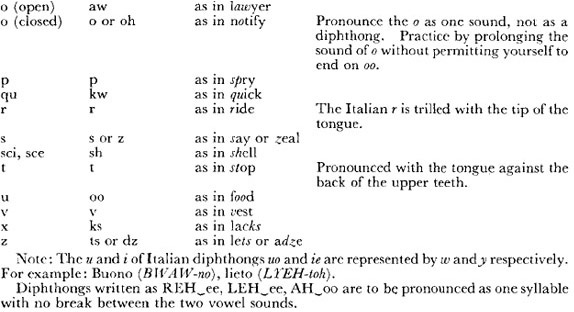
The Italian alphabet is given below along with the pronunciation of the name of each letter according to the transcription used in this book.
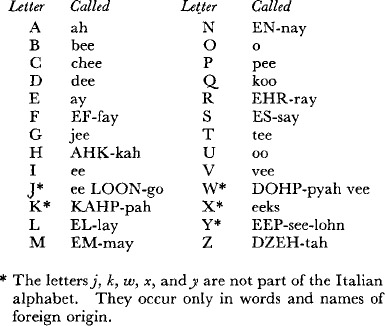
ESPRESSIONI COMUNI 1. Yes. S. see . 2. No. No. naw. 3. Perhaps. Forse. FOHR-say. 4. Please. Please.
Per favore. payr fah-VO-ray. 5. Excuse me. Mi scusi. 6. 6.
Thanks (very much). Grazie (tanto). GRAH-tsyay ( TAHN-toh ). 7. You are welcome. PREH-go. 8. 8.
It is ( not ) all right. (Non) va bene. ( nawn ) vah BEH-nay. 9. It doesnt matter. nawn eem-PAWR-tah. 10. 10.
That is all. Questo tutto. KWAY-sto eh TOOT-toh. 11. Wait a moment. ah-SPET-tee oon mo-MAYN-toh. 12. Come in. Avanti. ah-VAHN-tee. 13. Come here. Venga qui. Venga qui.
VEN-gah kwee. 14. What do you wish? Che cosa vuole? hay KAW-sah VWAW-lay? 15. What? Che cosa? kay KAW-sah? 16. Who? Chi? kee? 17. When? Quando? KWAHN-doh? 18.
Where? Dove? DOH-vay? 19. Why? Perch? payr-KEH? 20. How long? Quanto tempo? KWAHN-toh TEM-po? 21. How far? Quant distante? kwahn-TEH dee-STAHN-tay? 22. Listen! Senta! SEN-tah! 23. Look here. Guardi. GWAHR-dee.
GENERALIT 25.
GENERALIT 25.
I am an American citizen. Sono cittadino americano. SO-no cheet-tah-DEE-no ah-may-ree-KAH-no. 26. My name is John Smith. mee KYAH-mo jo-VAHN-nee Smith. 27. 27.
I spell my name SMITH. Il mio nome si scrive esse-emme-i-ti-acca. eel MEE-oh NO-may see SKREE-vay ES-say EM-may ee tee AHK-kah. 28. I am [a student]. Sono [studente] (masc.).
SO-no [ stoo-DEN-tay ]. 29. a student. studentessa (fem.). stoo-den-TAYS-sah. a teacher. insegnante. een-say-NYAHN-tay. 31. a business man. uomo daffari. uomo daffari.
WAW-mo dahf-FAH-ree. 32. I am here on [a business trip]. Sono qui [per affari]. SO-no kwee [ payr ahf-FAH-ree ]. a vacation. in vacanze. een vah-KAHN-tsay. 34. 34.
I am a friend of Mr. Silvi. Sono un amico del signor Silvi. SO-no oon ah-MEE-ko dayl see-NYOHR SEEL-vee. 35. My mailing address is 920 Broadway.
Il mio recapito 920 (nove cento venti) Broadway. eel MEE-o ray-KAH-pee-toh eh ( NAW-vay CHEN-toh VAYN-tee ) Broadway. 36. I am [hungry] thirsty. Ho [fame] sete. 37. 37.
I am [warm] cold. Ho [caldo] freddo. aw [ KAHL-doh ] FRAYD-doh. 38. I am [busy] tired. Sono [occupato] stanco.
SO-no [ ohk-koo-PAH-toh ] STAHN-ko. 39. I am ready. Sono pronto. SO-no PROHN-toh. 40.
I am in a hurry. Ho fretta. aw FRAYT-tah. 41. I am glad. Sono contento.
SO-no kohn-TEN-toh. 42. I am sorry. Mi dispiace. mee dee-SPYAH-chay.
SALUTI E CONVENEVOLI 43.
Good morning. Buon giorno. bwawn JOHR-no. 44. Good evening. Buona sera.
BWAW-nah SAY-rah. 45. Hello. Ciao. CHYAH_o. Good-bye. Addio. ahd-DEE-o. 47. 47.
Ill be seeing you. Arrivederci. ahr-ree-vay-DAYR-chee. 48. Until tomorrow. ah doh-MAH-nee. 49. 49.
How are you? Come sta? KO-may stah? 50. Fine thanks, and you? Bene, grazie, e Lei? BEH-nay, GRAH-tsyay, ay LEH_ee? 51. How is your family? Come sta la sua famiglia? KO-may stah lah SOO-ah fah-MEE-lyah? 52. (Not) very well. (Non) molto bene. 53. 53.
How are things? Come va? KO-may vah? 54. All right. Bene. BEH-nay. 55. Cos, cos. ko-SEE, ko-SEE. 56. 56.
May I introduce [Mr.] Mrs., Miss ? Posso presentarle [il signor] la signora, la signorina ? PAWS-so pray-zayn-TAHR-lay [ eel see-NYOHR ] lah see-NYOH-rah, lah see-nyoh-REE-nah ? 57. This is [my wife]. Questa [mia moglie]. KWAY-stah eh [ MEE-ah MO-lyay ]. 58. My husband.
Mi o marito. MEE-o mah-REE-toh. 59. My daughter. Mi a figlia. 60. My son. My son.
Mi o figlio. MEE-o FEE-lyoh. 61. My sister. Mi a sorella. 62. 62.
My brother. Mi o fratello. MEE-o frah-TEL-lo. 63. My mother. Mi a madre.
Next page
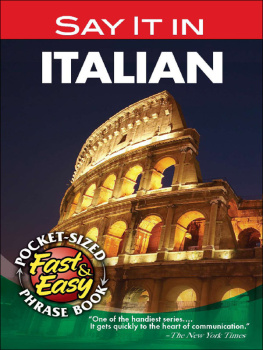
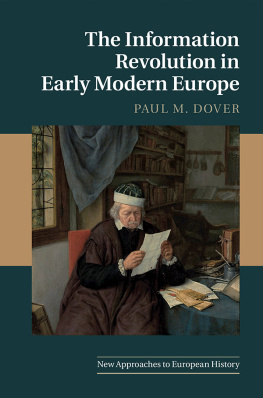
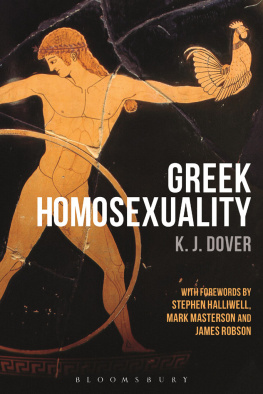
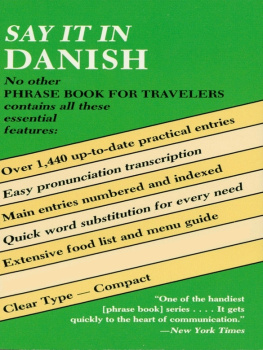


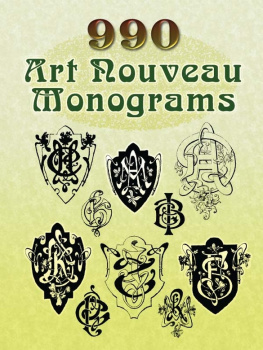






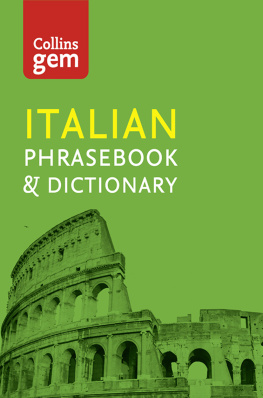
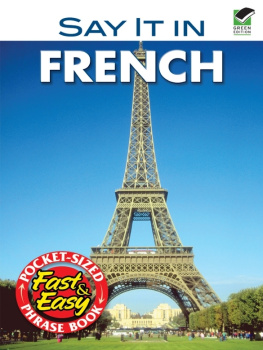
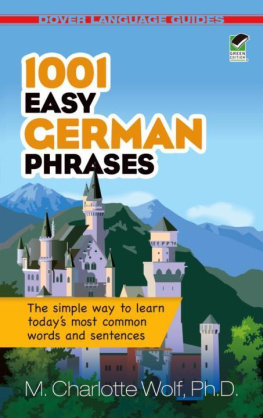


 SAY IT IN
SAY IT IN
 The Italian alphabet is given below along with the pronunciation of the name of each letter according to the transcription used in this book.
The Italian alphabet is given below along with the pronunciation of the name of each letter according to the transcription used in this book.  ESPRESSIONI COMUNI 1. Yes. S. see . 2. No. No. naw. 3. Perhaps. Forse. FOHR-say. 4. Please. Please.
ESPRESSIONI COMUNI 1. Yes. S. see . 2. No. No. naw. 3. Perhaps. Forse. FOHR-say. 4. Please. Please.